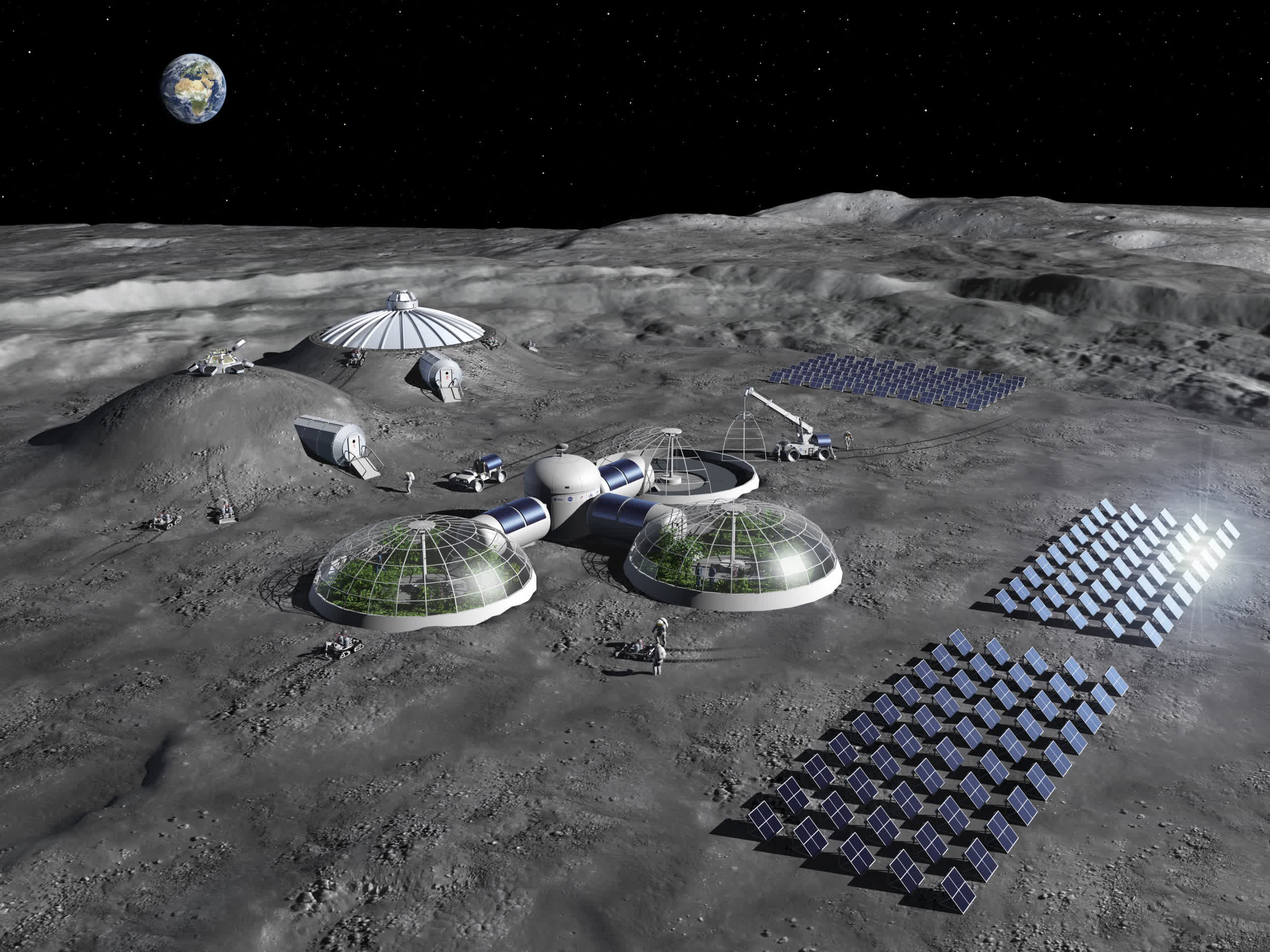In context: In the coming years, the Moon is expected to experience a significant increase in activity. A new generation of astronauts is poised to land on its surface, prompting the need for a cohesive infrastructure to support their presence. DARPA has taken an interest in laying the groundwork for this essential infrastructure.

The Defense Advanced Research Projects Agency (DARPA) is the research and development agency of the US Department of Defense, and is well known (among many other things) for creating ARPANET. Much like ARPANET started the original internet revolution, the US federal agency is now interested in kickstarting an integrated lunar infrastructure to promote a new space economy.
The recently unveiled 10-Year Lunar Architecture (LunA-10) study aims to expedite the development of foundational technology concepts that can collaboratively function. DARPA's objective is to transition from isolated scientific endeavors to a series of scalable, interoperable systems, fostering collaboration between companies and organizations.
The importance of such interoperable systems lies in their ability to minimize the lunar footprint and create opportunities for monetizing future lunar services, DARPA noted. Dr. Michael "Orbit" Nayak mused, "Imagine a wireless power station that can also provide comms and navigation in its beam." Nayak added that the next decade will usher in a significant shift in the lunar economy, and the LunA-10 initiative serves to explore potential solutions for designing multi-mission lunar platforms or systems.

The European Space Agency (ESA) has projected over 400 missions launching to the Moon between 2022 and 2032. The purpose of LunA-10 is to serve as an "accelerator" for critical lunar technologies, which could find application in both government and commercial space sectors. This initiative aims to stimulate a new "economic vibrancy" on the lunar surface.
Spanning seven months, LunA-10 is a study that seeks to establish an analytical framework for defining swift scientific and commercial opportunities through collaborative infrastructure investments, as clarified by DARPA. The study will primarily concentrate on key domains that have been pinpointed through a market analysis of the promising lunar economy. These domains encompass transit and mobility, energy, and communications, as well as potentially groundbreaking orbital or surface infrastructure concepts.
The deadline to submit a 10-page whitepaper and a technical presentation is set for September 25, 2023. The selected projects will be granted an "Other Transaction award" that will not exceed $1,000,000. However, the agency isn't focusing on allocating substantial funds at this stage. While DARPA won't directly provide funding to bring the winning projects to fruition, it will offer its "economic expertise" and analytical capabilities to all LunA-10 teams.
https://www.techspot.com/news/99860-darpa-luna-10-project-plans-create-common-framework.html